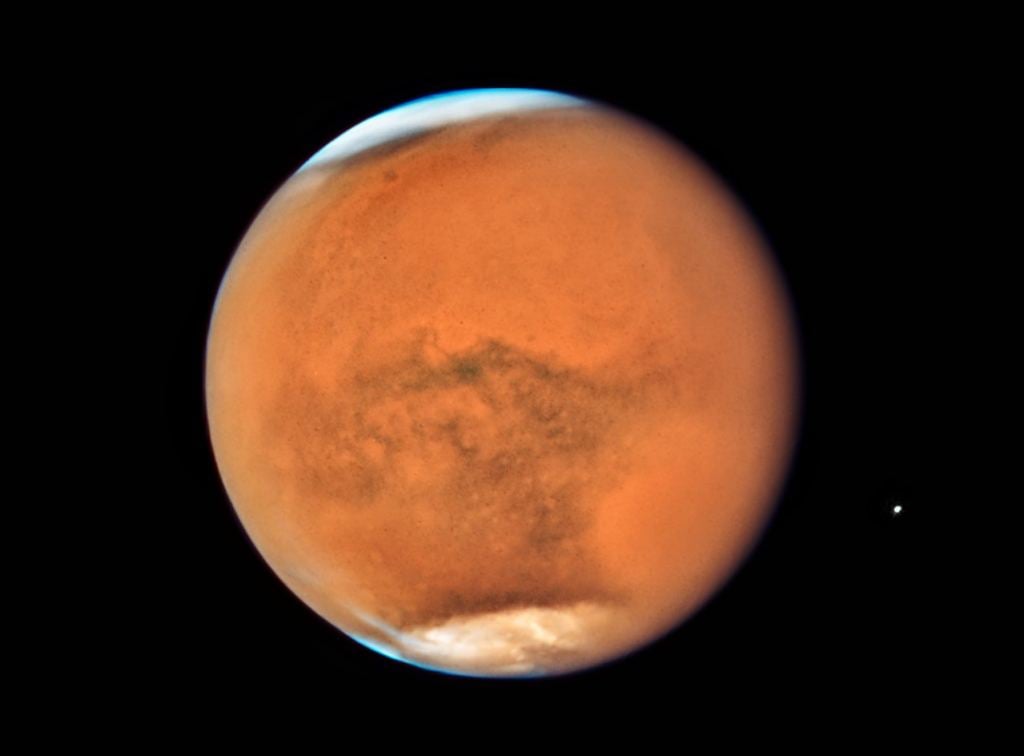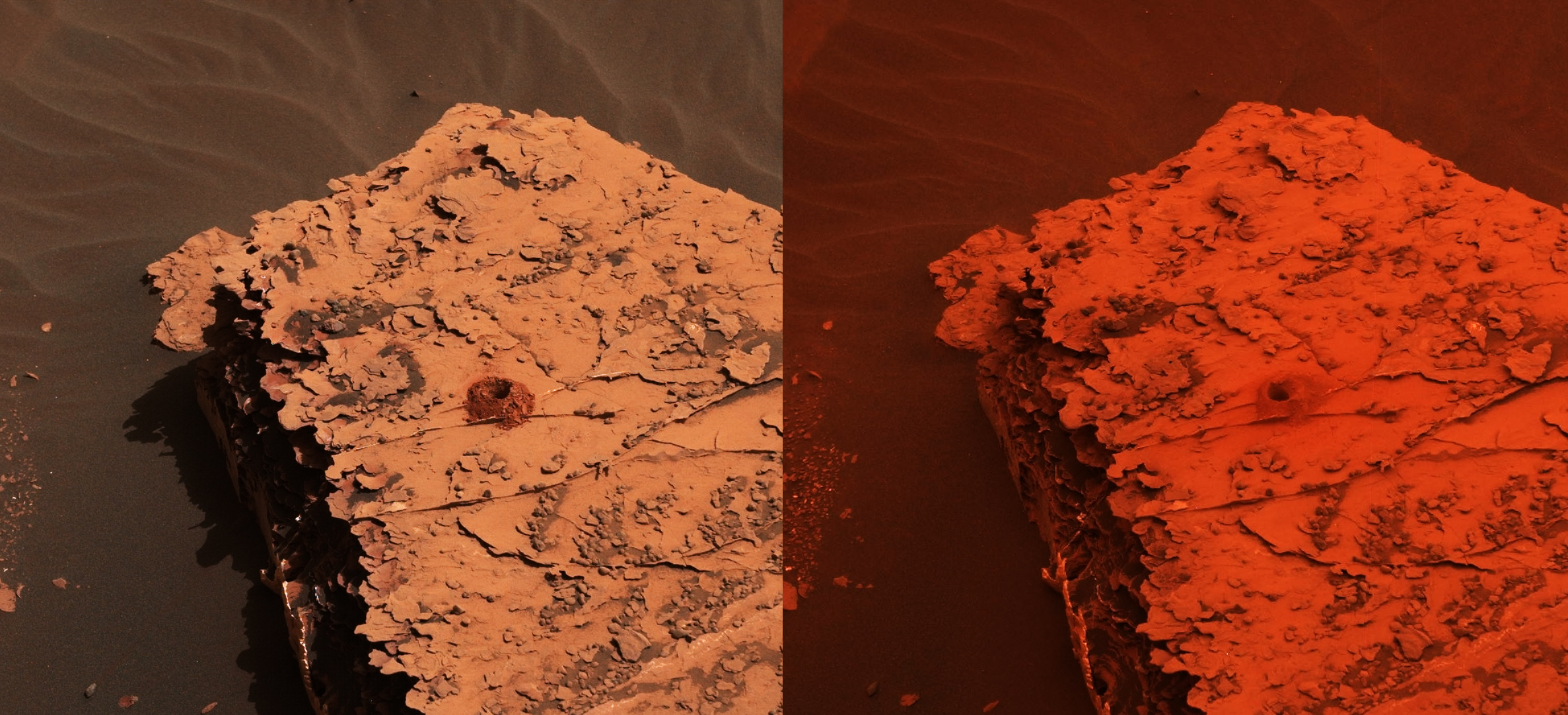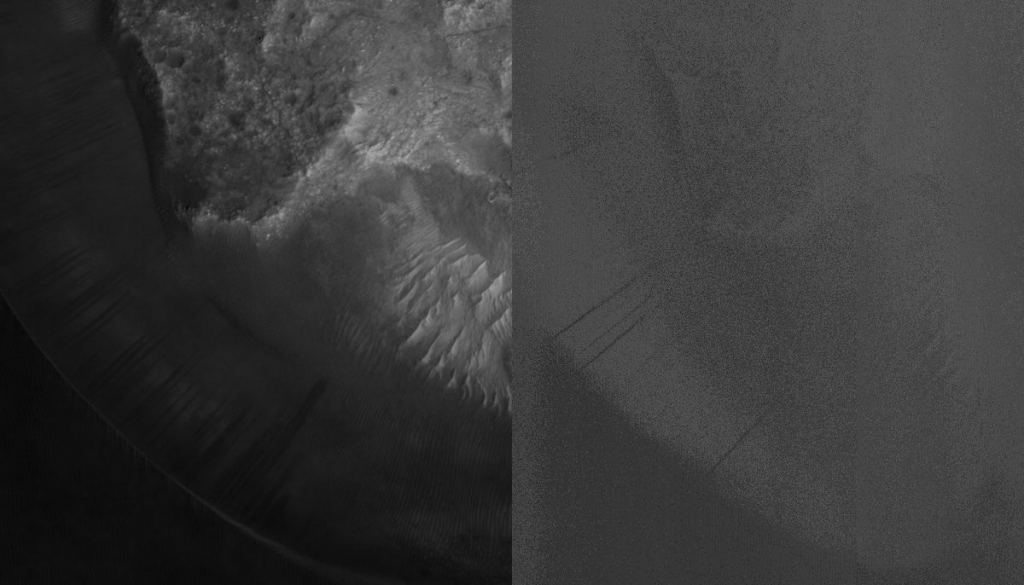The enduring, and maybe endearing, mystery around Mars is what happened to its water? We can say with near-certainty now, thanks to the squad of Mars rovers and orbiters, that Mars was once much wetter. In fact that planet may have had an ocean that covered a third of the surface. But what happened to it all?
As it turns out, the global dust storms that envelop Mars, and in particular the most recent one that felled the Opportunity rover, may offer an explanation.
“The global dust storm may give us an explanation.” Geronimo Villaneuva, Martian water expert, NASA's Goddard Space flight Center
Dust storms on Mars are common. They tend to be seasonal, taking place during the spring and summer in the southern hemisphere. They last a couple days and cover areas as large as the US. But then there are the planet-encircling, or global, dust storms.
The global dust storms are more unpredictable than their smaller, seasonal counterparts. They appear every few years and can cover the entire planet. And they can stick around for months on end. During the last one, which lasted from June 2018 to September 2018, six orbiting spacecraft and two surface rovers observed the storm, though unfortunately Opportunity didn't survive it.
The question is, what causes these massive storms? How are they a part of the Martian climate and atmosphere? Did they and do they contribute to water loss? NASA scientists are trying to answer those questions.
First of all, a quick answer to an often-asked question: Why did Opportunity perish in the global dust storm while Curiosity survived it? Opportunity was solar powered, and the dust blotted out the Sun. There may have been other causes, because no rover lasts forever, but the lack of solar energy certainly played a part. But Curiosity is a nuclear-powered machine, and it doesn't care about the Sun.
Back to the global dust storms.
We've witnessed several global dust storms on Mars. In 1971, the Mariner 9 spacecraft arrived at Mars and found it shrouded in dust. Since then, we've seen storms in 1977, 1982, 1994, 2001, 2007 and 2018. There were actually two separate global storms in 1977, adding to the mystery of their cause.
Scott Guzewich is a NASA atmospheric scientists at the Goddard Space Flight Center. He's leading NASA's investigation into Martian dust storms. In a press release, Guzewich said, "We still don't know what drives the variability, but the 2018 storm gives another data point." And science is all about accumulating data points.
The dust storms may offer a clue to the case of Mars' disappearing water.
Geronimo Villaneuva is a NASA scientist at the Goddard Space Flight Center who has spent his career studying Martian water. Together with colleagues at the European Space Agency and at the Roscosmos Russian space agency, they think they may have it, at least partially, figured out. "The global dust storm may give us an explanation," Villaneuva said in a press release.
It may come down to a combination of dust, the lofting of H2O into the upper atmosphere, and the Sun's radiation.
“When you bring water to higher parts of the atmosphere, it gets blown away so much easier.” Geronimo Villaneuva, NASA's Goddard Space Flight Center
Global dust storms on Mars don't only lift dust high into the atmosphere. They also carry water. Typically, water is carried as high as 20 km (12 miles) into the atmosphere. But Villaneuva and his colleagues used the ExoMars Trace Gas Orbiter to detect water as high as 80km (50 miles) in the atmosphere during these global dust storms. At 80 km altitude, the Martian atmosphere is extremely thin, and the water is exposed to solar radiation. That radiation can split apart the H2O molecule, and the solar wind can blow the hydrogen and oxygen into space.
"When you bring water to higher parts of the atmosphere, it gets blown away so much easier," says Villanueva,
On Earth, lofted moisture condenses and falls to Earth as rain. But on Mars, this may have never been the case. It's possible that Mars slowly lost its water over a long period of time through this mechanism.
Villaneuva and his colleagues presented their findings in a paper published on April 10th, 2019 in the journal Nature.
 Universe Today
Universe Today




